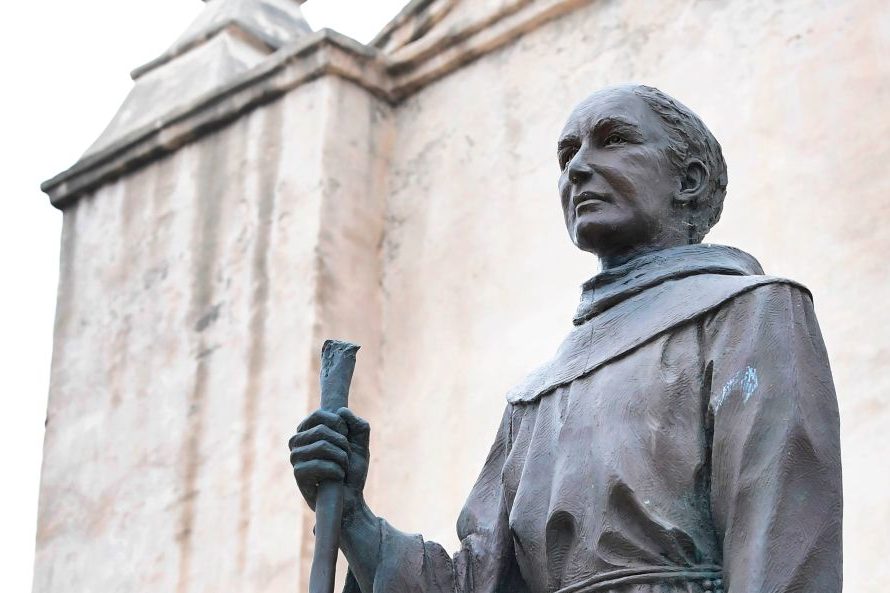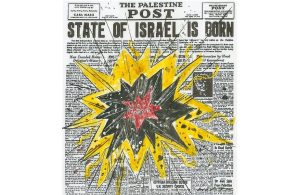In July, the world’s most powerful man tweeted the words ‘There Is A War On Christianity’. Donald Trump’s tweet referred, somewhat cryptically, to an interview on the One America News Network with a man the President identified as ‘Dr Taylor Marshall, author’.
Marshall told the interviewer, Jack Posobiec, that the protests that erupted after the killing of George Floyd had spawned a movement seeking to ‘erase Christian civilization’ through mob violence. ‘The goodness that we have experienced in our nation emerged from a Christian culture,’ Marshall said. ‘And these atheists, these socialists, these Marxists, they know that and they are attacking it.’
Marshall is a prominent figure in the US Catholic online subculture. In his 2019 book Infiltration, he argued that ‘clandestine societies populated by Modernists and Marxists’ have sought to subvert the Church from within, with the ultimate goal of electing a pope drawn from their own villainous ranks.
You might dismiss Marshall as a conspiracy theorist (many do). But he was drawing attention to a phenomenon that has received little media attention: the wave of attacks on Christian statuary and property across the United States this summer.
I say ‘Christian’ but the onslaught is mainly directed at Catholics. The watchdog group Complicit Clergy has mapped recent incidents of anti-Catholic vandalism in the US. White crosses mark acts of violence from sea to shining sea — more than 70 so far this year.
Clicking at random, we see an image of Our Lady of Guadalupe toppled in Upland, California; a statue of St Jude beheaded in Denver, Colorado; a rock thrown through a stained-glass window in Purcell, Oklahoma; a church pelted with a Molotov cocktail in Weymouth, Massachusetts; and another church firebombed with the congregation inside in Ocala, Florida.
Are these events part of a ‘war on Christianity’? Of course people inclined to blame a Marxist cabal when they stub their toes would say yes. But they aren’t the only ones.
On August 11, the Louisiana senator John Kennedy wrote a letter to Attorney General Bill Barr beginning ‘Catholics are under attack in America’. Kennedy, a Methodist, continued: ‘That is a sentence I hoped I would never have to write, but it is the reality we are facing.’
Perhaps to preempt the claim that the Catholic Church is infused with white supremacy and therefore had it coming, Kennedy highlighted a church founded in Los Angeles by Middle Eastern immigrants that was spray-painted with anti-police slogans. ‘Middle Eastern Christians represent a minority community,’ he wrote. ‘Many are first-generation Americans who moved to the United States to escape persecution.’ Indeed, it would make little sense for campaigners against racial injustice to hound the Catholic Church, which is not only committed to eliminating racism, but is also one of the world’s most ethnically diverse communities.
So what is driving the attacks? One well-informed, sober Catholic told me that he believed churches were being singled out for political reasons. A perceived alliance between Christian voters and Trump has made them fair game in the eyes of many of the President’s opponents. He also pointed out that the Catholic Church is ensnared in a web of culture-war legal disputes. These include whether nuns should be forced to pay for contraception, Catholic adoption agencies obliged to place children with gay couples and Church schools free to dismiss teachers who enter same-sex marriages. All this, he said, puts Catholicism in the crosshairs.
At the same time, the American Catholic Church is in considerable disarray. Scandals and secularization have robbed it of prestige and power, leaving it vulnerable to agitators, as it was in the decades following its establishment in the late 18th century.
Consider: half of US Catholics baptized in the past 30 years have either stopped practicing the faith or are ‘unaffiliated’. And the number of adults describing themselves as Christians has fallen by 12 percent.
Meanwhile, coronavirus has caused hitherto unimaginable disruption to parish life, with the result that thousands more are likely to fall out of the habit of churchgoing.
The politicization of Christianity, rampant secularism and a weakened Church have combined to make Catholicism a target for the young and angry. And yet, as long as the attacks remain confined to symbols, Catholics have little to fear. Statues can be repaired, graffiti sandblasted. It’s a mild taste of what Christians in Nigeria and China face every day. And while Christianity has energetic enemies, no mob can ever inflict as much damage on the Church as an abusive priest.
Luke Coppen is Europe editor of the Catholic News Agency. This article is in The Spectator’s October 2020 US edition.


















